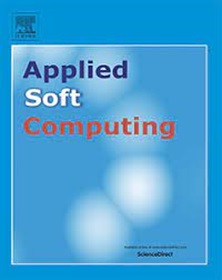Pigmented skin disease classification via deep learning with an attention mechanism
IF 7.2
1区 计算机科学
Q1 COMPUTER SCIENCE, ARTIFICIAL INTELLIGENCE
引用次数: 0
Abstract
Pigmented skin disease is common; doctors need to observe and analyze pigmented skin disease images for diagnostic purposes. However, due to regional differences, diagnoses are subjective, resulting in high misdiagnosis rates. Therefore, this paper proposes a deep learning-based method for classifying pigmented skin disease images named the skin-global attention block (Skin-GAB). This method automatically classifies pigmented skin disease images through a system architecture that includes image augmentation, image segmentation, cluster analysis, segmented and original image classification, and network fusion. Additionally, this paper utilizes the GAB attention mechanism to encode the height, width, and channel of the feature maps, allowing the model to automatically learn crucial features from pigmented skin disease images and focus its attention on task-relevant information, thereby capturing disparities in input feature maps and further enhancing the model’s performance. The experimental results show that the proposed method performs well in terms of accuracy and practicality. Compared to using Xception as the classification network and the convolutional block attention module (CBAM) as the attention mechanism on the HAM10000 dataset, the system architecture proposed in this paper provides an improvement in accuracy of 2.89%. Therefore, this method will provide more accurate and efficient technical support for medical fields such as pigmented skin disease diagnosis and treatment.

求助全文
约1分钟内获得全文
求助全文
来源期刊

Applied Soft Computing
工程技术-计算机:跨学科应用
CiteScore
15.80
自引率
6.90%
发文量
874
审稿时长
10.9 months
期刊介绍:
Applied Soft Computing is an international journal promoting an integrated view of soft computing to solve real life problems.The focus is to publish the highest quality research in application and convergence of the areas of Fuzzy Logic, Neural Networks, Evolutionary Computing, Rough Sets and other similar techniques to address real world complexities.
Applied Soft Computing is a rolling publication: articles are published as soon as the editor-in-chief has accepted them. Therefore, the web site will continuously be updated with new articles and the publication time will be short.
 求助内容:
求助内容: 应助结果提醒方式:
应助结果提醒方式:


